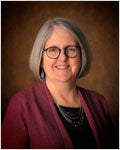ACIP Now Recommends Hepatitis B Vaccine within 24 Hours of Birth
March 2017
| Technically Speaking | |
|
|
 |
|
|
|
|
|
| TECHNICALLY SPEAKING | |
| ACIP Now Recommends Hepatitis B Vaccine within 24 Hours of Birth | |
| Published March 2017 | |
| Information presented in this article may have changed since the original publication date. For the most current immunization recommendations from the Advisory Committee on Immunization Practices, visit www.immunize.org/acip/acip_vax.asp. | |
| Each February, the U.S. Recommended Immunization Schedule for Children and Adolescents is published by the Advisory Committee on Immunization Practices (ACIP), American Academy of Family Physicians, American Academy of Pediatrics, and American College of Obstetricians and Gynecologists to reflect current recommendations for licensed vaccines.
This year, an “easy-to-miss” but significant change was made to the timing of the first dose of hepatitis B vaccine (HepB birth dose) when administered to infants born to women who are not infected with the hepatitis B virus (HBV), i.e., women who are hepatitis B surface antigen (HBsAg)-negative. Here is the side-by-side comparison: In the 2016 schedule (page 4), the first bullet in the footnote for hepatitis B vaccine read: “At birth: Administer monovalent HepB vaccine to all newborns before hospital discharge.” In the 2017 schedule (page 5), the first bullet in the same footnote section reads: “At birth: Administer monovalent HepB vaccine to all newborns within 24 hours of birth.” This modification was adopted during the October 2016 ACIP meeting, when the committee voted to recommend administration of the “birth dose” in the 24-hour window immediately after birth. This change re-emphasizes the importance of the timeliness of this dose as a safety net to protect newborns from becoming infected with hepatitis B at birth and developing chronic HBV disease later in life. Furthermore, the new guidance removed previous policy language that allowed for delays in administering the birth dose “on a case-by-case basis and only in rare circumstances” (see page 17, ACIP hepatitis B recommendations, December 2005). On March 6, CDC posted additional information about the HepB birth dose guidance on its Child and Teen Immunization Schedule web page (see “Changes to the Schedule” section), which provides clarifications about the recommendations for infants whose mothers’ HBsAg status is unknown or positive and for low birth weight infants:
The clarification concludes by noting that “Additional detail regarding hepatitis B vaccination of infants born to HBsAg-positive mothers or mothers whose hepatitis B status is unknown can be found in the ACIP hepatitis B recommendations.” CDC resourceRecommended Immunization Schedule for Children and Adolescents Aged 18 Years or Younger, U.S., 2017 |